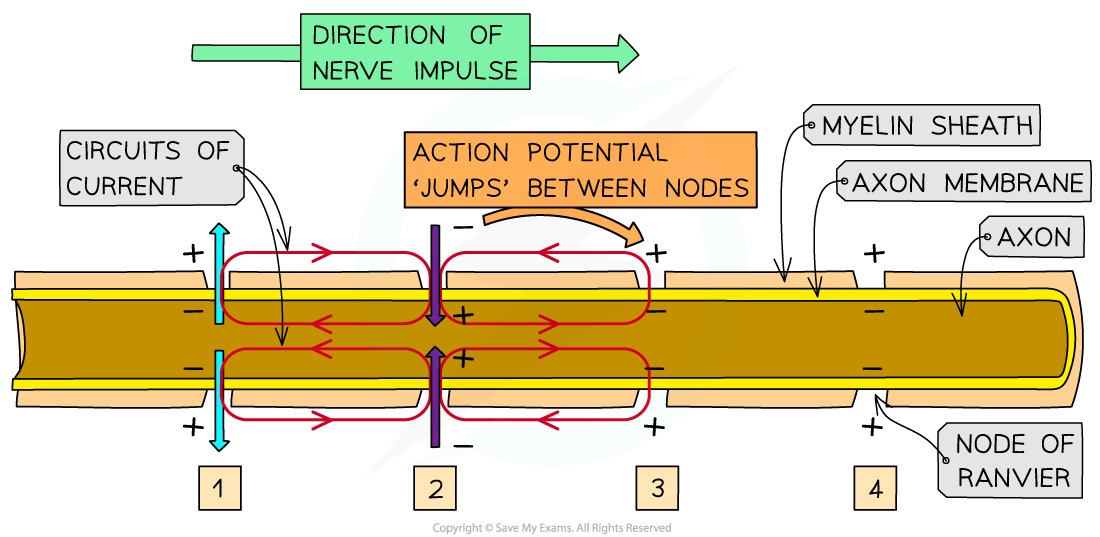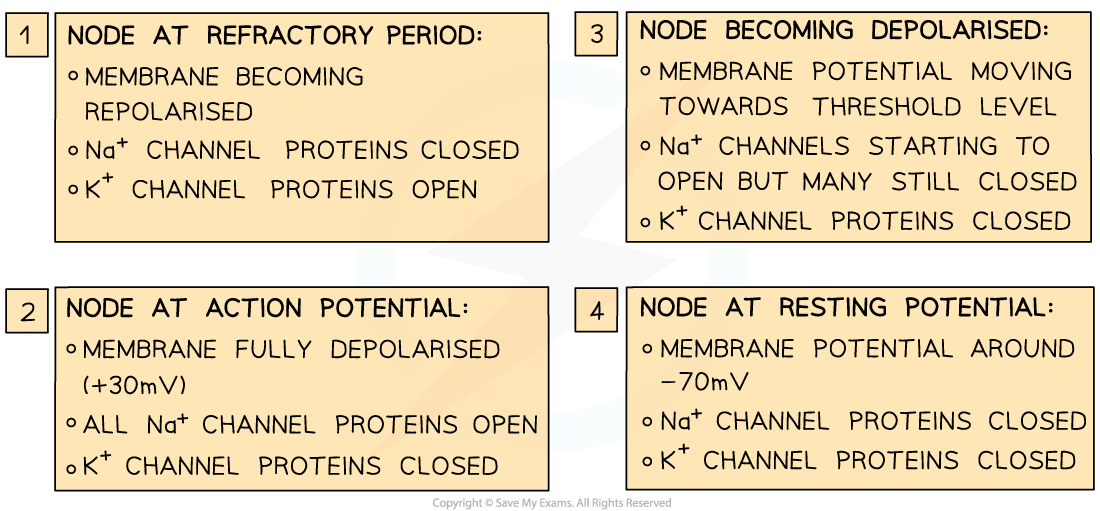- 翰林提供学术活动、国际课程、科研项目一站式留学背景提升服务!
- 400 888 0080
AQA A Level Biology复习笔记6.2.5 Speed of Conduction of Impulses
Factors that Affect the Speed of Conduction
- The speed of conduction of an impulse refers to how quickly the impulse is transmitted along a neurone
- It is determined by multiple factors:
- The presence or absence of myelin (ie. whether or not the axon is insulated by a myelin sheath)
- The diameter of the axon
- Temperature
Myelination
- In unmyelinated neurones, the speed of conduction is very slow
- This is because depolarisation must occur along the whole membrane of the axon
- By insulating the axon membrane, the presence of myelin increases the speed at which action potentials can travel along the neurone:
- The myelin sheath is formed from Schwann cells
- In sections of the axon that are surrounded by a myelin sheath, depolarisation (and the action potentials that this would lead to) cannot occur, as the myelin sheath stops the diffusion of sodium ions and potassium ions
- Action potentials can only occur at the nodes of Ranvier (small uninsulated sections of the axon)
- The local circuits of current that trigger depolarisation in the next section of the axon membrane exist between the nodes of Ranvier
- The presence of Schwann cells means the action potentials ‘jump’ from one node to the next, this is known as saltatory conduction
- Saltatory conduction allows the impulse to travel much faster (up to 50 times faster) than in an unmyelinated axon of the same diameter


Transmission of an action potential in a myelinated axon by saltatory conduction
Diameter
- An impulse will be conducted at a higher speed along neurones with thicker axons compared to those with thinner axons
- Thicker axons have an axon membrane with a greater surface area over which the diffusion of ions can occur
- This increases the rate of diffusion of sodium ions and potassium ions through protein channels, which in turn increases the rate at which depolarisation and action potentials can occur
- Axons with a greater diameter also possess a greater volume of cytoplasm (which contains ions). This reduces their electrical resistance so that an action potential can push into the next section faster
Temperature
- Some animals, such as mammals, maintain very stable body temperatures. Temperature does not usually affect the speed of nerve impulses in these animals
- The body temperature of other animals can vary with the environment
- For example, cold-blooded reptiles
- Colder conditions can slow down the conduction of nerve impulses
- The colder temperatures mean there is less kinetic energy available for the facilitated diffusion of potassium and sodium ions during an action potential
转载自savemyexams


最新发布
© 2025. All Rights Reserved. 沪ICP备2023009024号-1








